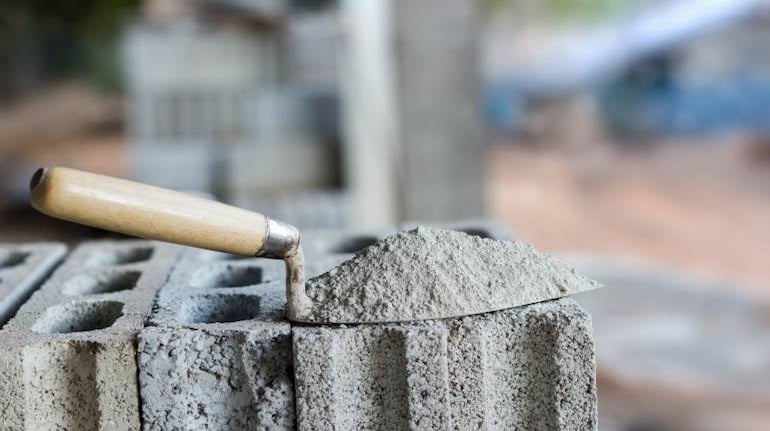
Soon after billionaire Gautam Adani announced his $10.6- billion acquisition of India’s second-biggest cement business from Holcim Group of Swizerland last month, UltraTech Cement announced a mega investment plan to scale up capacity and signalled that it will aggressively protect its market leadership.
The entry of an aggressive new player will not just put pressure on small cement manufacturers, but will also turn up the heat on the big boys as they seek to protect their market share. As a new order emerges, the scale ambitions of the bigger players could potentially lead to price wars and put pressure on margins over the next two-three years as new capacities become operational.
Cement makers could be in a tricky situation because if they aspire for stable pricing and healthy margins, they may lose market share or be forced to revisit growth plans.
“Adani has acquired an established business so an immediate price war is unlikely. However, the larger players will aggressively add capacity over the next few years,” Snehdeep Bohra, Director of Corporate Ratings, Fitch Ratings, told Moneycontrol.
“This will have two implications, one the consolidation in the industry will rise further and that means the smaller players will be at a disadvantage. Secondly, as the top five add capacity, they would fight for volume which could have an impact on their pricing power and margin,” he added.
Game on
The Aditya Birla group lost the race to acquire Holcim’s Indian cement business to the Adani Group but it soon announced that its flagship UltraTech Cement will spend Rs 12,866 crore in adding 22.6 million tonnes per annum (mtpa) of capacity to its current capacity of 119.95 mtpa. This comes on the back of an expansion drive that saw UltraTech double its capacity in the last five years.
The Adani Group too is gearing up to double the newly acquired capacity of Ambuja-ACC from Holcim to 140 million tonnes over 5 years.
JSW Cement, which was also a suitor for Holcim’s India assets, also aims to increase its capacity to 25 mtpa over the next two years from 14 mtpa.
Others too are scaling up, hoping to tap the opportunity arising out of the government’s infrastructure push and a pick-up in housing construction. Dalmia Bharat aims to scale up capacity to 48.5 mtpa by 2024 and to 130 mtpa by 2030, from 35.9 mtpa now.
Shree Cement is in the process of expanding to 80 mtpa by 2030 from around 50 mtpa now.
Analysts tracking the sector say the capacity addition may lead to a glut as its hinges on hopes of accelerated growth in construction. Around 70-80% of the additional capacity in the next 3-5 years will be by the top five cement makers, putting the smaller and marginal players at a disadvantage.
The bigger entities will have more pricing power and may be able to leverage on their brands better, analysts said.
“The risk of incumbents announcing aggressive capacity addition plans to maintain their capacity share would eventually weigh on sector profitability and return ratios…In the near term (over FY22-24), we expect the pace of capacity additions to equate the demand growth (at around 8%) and thus see no pressure on industry utilisation (around 65%); however, capacity additions can outpace demand growth post FY24,” Devesh Agarwal of IIFL Securities wrote in a note.
In the past, when industry capacity utilisation declined from nearly 100% in FY08 to 64% in FY17, the return on equity declined from highs of 20-25% to 8-10%. Investors’ concern is evident in the correction of cement stocks.
Price challenge
Even if the cement heavyweights just want to maintain market share by scaling up, they may have to take a hit on prices What will make it more challenging is that they have not been able to increase prices to absorb inflationary pressure from higher input costs.
Rating agency ICRA said in a note on June 15 that while cement production in FY2022 was higher by 21% year-on-year and by 8% over the pre-COVID level of FY2020, the high input costs resulted in a decline in operating margins by around 390 basis points in FY2022.
One basis point is one-hundredth of a percentage point.
Global securities firm Investec has turned bearish on almost the entire cement block, barring a couple of exceptions. The brokerage conducted pan-India cement dealer checks for May and concluded that cement mills attempted a price increase in the first week of May 2022 but were compelled to roll it back on slack demand.
In fact, the persistent weak demand into the month led to the mills rolling back price hikes initiated in April 2022, with prices declining upto Rs35/bag month-on-month. To factor in the sticky cost inflation and inadequate price hikes, Investec trimmed earning expectations and reduced target prices across its coverage universe by up to 38 percent.
“Most new capacity addition over the next 3-4 years is likely to be back-loaded, and that’s when there could be a potential glut. It remains to be seen if the demand will rise at a rate that it absorbs this capacity. My view is that there will be a mid- to high single-digit kind of demand growth,” Bohra of Fitch said.
The operating margins declined by around 390 bps to 20.8% in FY2022, noted Anupama Reddy, Vice President and Sector Head, Corporate Ratings, ICRA.
“The input costs are likely to remain elevated in the near term, and are expected to exert pressure on operating margins, resulting in a further decline by 440-490 basis points in FY2023,” said Anupama Reddy, Vice President and Sector Head, Corporate Ratings, ICRA.
Discover the latest business news, Sensex, and Nifty updates. Obtain Personal Finance insights, tax queries, and expert opinions on Moneycontrol or download the Moneycontrol App to stay updated!